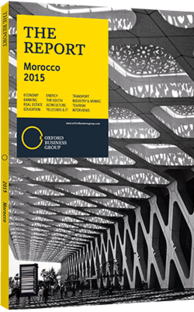Cutting the cost: Plans to set up new logistics areas should benefit the whole transport sector
Alongside efforts to develop transport infrastructure, Moroccan authorities are working to improve efficiency and bring down the costs for shipping, transport and distribution. A set of new measures – ranging from road interchanges to specialised industrial zones – are aiming to reduce logistics costs from the current 20% of GDP to 15% over the coming years. Under the National Strategy for Moroccan Logistics Competitiveness, established through a partnership between the Moroccan government and the General Moroccan Enterprise Confederation (Confédération Générale des Entreprises du Maroc, CGEM) in 2010, authorities and the private sector have been targeting reforms.
Despite delays with the implementation of the programme, strides were made in 2012 with the creation of the Moroccan Agency for Logistics Development (Agence Marocaine pour le Développement de la Logistique, AMDL), with a mandate to oversee the improvement of logistics conditions throughout the country.
COST OF DOING BUSINESS: Morocco’s logistics performance fares relatively well compared to its neighbours, especially in the way that the economy interacts with international markets. According to the World Bank’s “2015 Doing Business” report, Morocco ranks 31st out of 189 countries for ease of trading across borders, a considerable improvement when compared to a 2014 ranking of 40th.
It costs an average of $595 to export a container from Morocco compared to $1166 in the MENA region and $1080 in OECD countries. Overall, it takes 10 days to export a container from the kingdom. Costs are slightly less competitive for importing, which can run up to $970 for a container and take 14 days. Comparably, average container import costs about $1307 in MENA countries and $1100 for OECD countries.
Although Morocco still compares well in the region in terms of the cost of moving a container, the considerable differential between import and exports costs might point to the burden of bureaucracy in some of the related procedures, which take an average of 10 days for exporting goods, but 14 to import. In OECD countries, the cost differential between average import and exports costs for a container is $20.10, much lower than Morocco’s $375 gap, according to the World Bank. Although this difference in export and import costs is customary in most economies, the disparity in Morocco’s case is a sign improvements can be made.
STRUCTURING LOGISTICS ZONES: Several aspects of the shipping process have improved in recent years, including Customs procedures and average handling times. The government is also planning the creation of new logistics zones. In September 2014, the minister of equipment, transport and logistics, Aziz Rabbah, announced that out of a $100bn investments in infrastructure planned for the coming 20 years, $25bn would fund the establishment of logistics and industrial zones. Authorities have announced that 3300 ha of new zones will be established up to 2030. This effort will be largely in the hands of the AMDL, which announced in January 2015 that 2700 of the 3300 ha had been set aside: 1000 ha around Casablanca and 1700 ha around Agadir, Meknès, Fez and Tangiers.
Casablanca’s 1000 ha will be divided into eight zones, with the Zenata Logistics Zone likely to be the first to launch in late 2015. The initial two phases of the zone will cover 128 ha at a cost of Dh1.3bn (€141.4m). The project includes a road linking the area to the port of Casablanca, which will be financed by the Ministry of Equipment, Transport and Logistics and the National Ports Agency, and is set for completion by early 2016.
CRITICAL EVALUATION: The government has also established the Moroccan Observatory for Logistics Competitiveness (Observatoire Marocain de la Compé titivité Logistique, OMCL), charged with measuring the logistics environment in the country. The OMCL will be a non-for-profit organisation, financed by the state budget and an annual Dh5m (€544m) grant from CGEM. Authorities have established an assistance agreement with the World Bank’s International Finance Corporation to help set up the logistics measurement body.
You have reached the limit of premium articles you can view for free.
Choose from the options below to purchase print or digital editions of our Reports. You can also purchase a website subscription giving you unlimited access to all of our Reports online for 12 months.
If you have already purchased this Report or have a website subscription, please login to continue.

